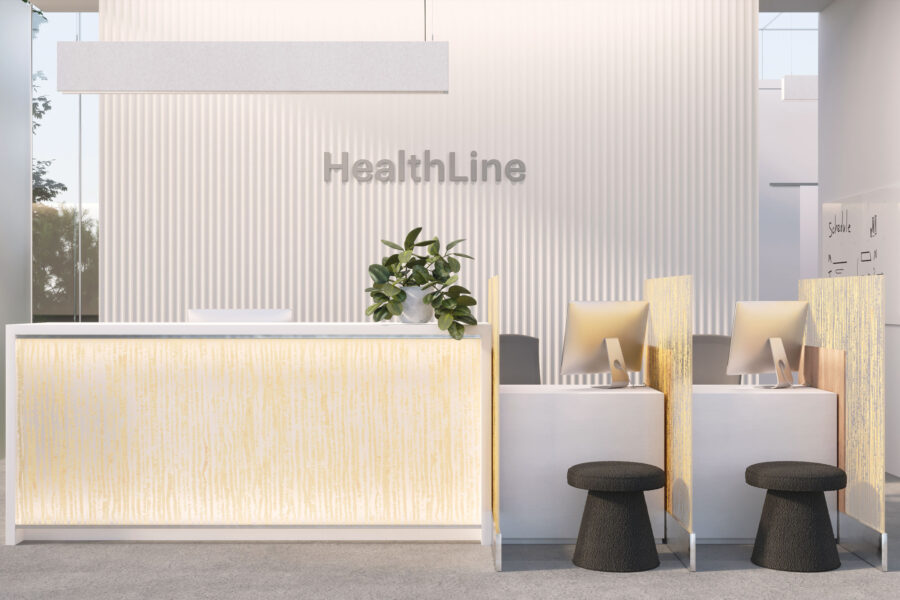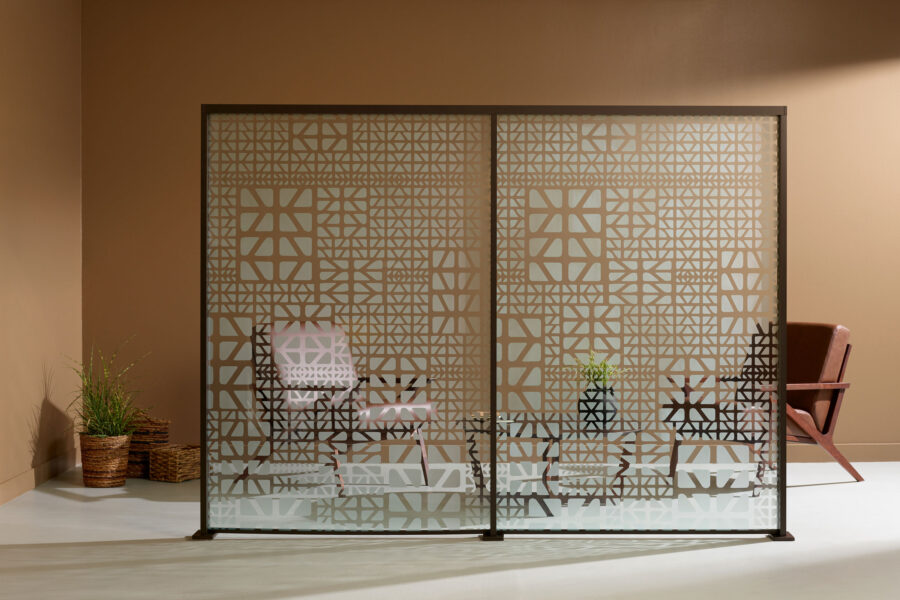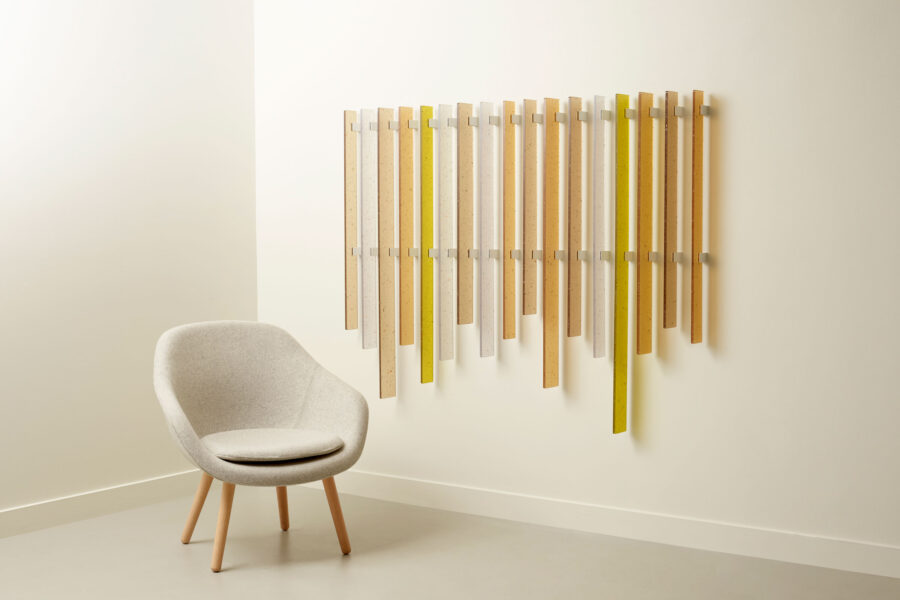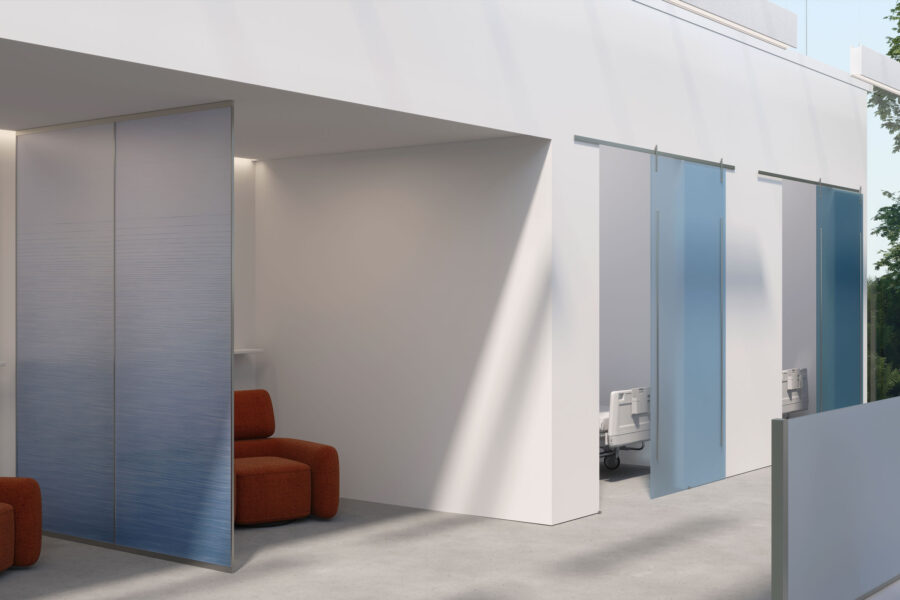Story at a glance:
- Design strategies for the modern office are evolving, and flexible workspaces and sustainability are key.
- Gensler and 3form are innovating with products like those in the Global Expressions Collection in response to a demand for flexibility.
Flexible, inclusive work environments combined with sustainable, easy to clean materials are among some of the top design initiatives architecture giants like Gensler are employing today.
“US workers favor offices that offer a desirable mix of experiences and support multiple modes of work,” says Scott Star, director of product development and global practice area leader at Gensler, pointing to a recent workplace survey conducted by Gensler. “From a product development perspective I’m seeing increased interest from both our manufacturer clients and interior design teams for products that do a bunch of things.”
“Modern office design needs to promote flexibility, he says, as employees want to work in spaces that support their immediate work needs, allowing them to be both productive and innovative.” “Interior designers and their clients also want great spaces that look and feel more integrated,” Star says, noting a demand for designs that fit seamlessly into a space.
Flexible Solutions

Photo courtesy of 3form
Enter manufacturers like 3form, who’ve long been innovating to deliver translucent materials that harness form, texture, light, and color for clever solutions like partitions, wall features, and sound absorbing solutions in the office.
“This is a great time to be in the industry,” says Ryan Smith, chief creative officer at 3form, who’s been with the company since 2008. “We may not know entirely where offices are going or where we all land on some future materials, but we’re at the forefront of this conversation, and it’s a lot of fun.”
Smith says many design conversations today are focused on getting rid of traditional workspaces in favor of spaces that feel more like home. People want flexibility as well as the feeling of nature and warmth. “These themes are now ubiquitous across the design universe,” he says.
Star also expects the demand for privacy to increase. “Open workspaces are frequently repurposed during the course of the day. Just think about one example where freestanding panels might be pulled into position to surround a meeting table to provide privacy and then pulled away when the meeting wraps to reset the space and create a more open feeling. As spaces become more flexible that’s going to change the requirements of the products used to furnish the spaces.”
He says flexibility promotes productivity and innovation by allowing workers to easily alter their environments—quickly creating spaces to best support their specific activities with products that are more “hackable” and user-controlled. Star also expects spaces to become much more inclusive. “The key is to design products with an elegance and inconspicuousness so the intended audience doesn’t feel singled out because of their limitations. Everyone should feel like they’re being treated the same. That’s the best inclusive design,” he says. “Products that are designed to be inclusive can really benefit the broadest group of people because they frequently harbor benefits for the general population.”
He says products that support hyper adaptable work environments and that can be easily altered by individuals will be in higher demand.
Global Expressions Collection

The Global Expressions Kuba pattern is seen here. Kuba cloth designs originated in Central Africa. 3form’s rendition is focused on its bold geographic repeats. Photo courtesy of 3form
3form has responded to this demand for flexibility and comfort by updating some of its most beloved patterns and forms to be even more biophilic in style, too. Smith says “bringing the outdoors in” creates spaces that are not only textured and warm but also provide the look of greenery without having to maintain actual greenery, for example. “You can use our materials to create this incredible emotional feel. To me that’s innovative.”
3form recently collaborated with Gensler to create the Global Expressions Collection—six patterns for the manufacturer’s etched glass and signature Varia resin inspired by six traditional textiles from across the planet. The complete range of office products can be used for panels, partitions, cladding, feature walls, elevator lobbies, and more.
“Global Expressions can be used for screens around workstations and reception desks. It can also be used for signage. And the patterns, while attractive and compelling even without explanation, are especially appropriate when elements of artistry and craft and a human touch make sense,” Star says.

Jakar, from the Global Expressions Collection from 3form and Gensler. Photo courtesy of 3form
The collection’s six patterns—Kente, Yakan, Jakar, Shibori, Kuba, and Ochre—reinterpret traditional weft techniques, material dyeing processes, and brocades through asymmetrical grids, faded corners, and intersecting shapes. Shibori’s faded edges represent an ancient Japanese tie-dyeing method, while Kuba reimagines traditional handcrafted designs in an irregular gridded repeat.
The collection also offers material resilience with long-lasting application in high-traffic environments. “These products bring visual texture, diffused light, and privacy to multiple interior applications,” Star says. “And each can be scaled and colored to achieve the precise look designers are after.”
The Demand for Sustainability

3form earned the Just Label for company-wide social justice. Started by the International Living Future Institute, Just is a nutrition label for ethical companies. “We have labels that acknowledge our products; the Just Label acknowledges our people,” says Ryan Smith, 3form’s chief creative officer. “We’re excited to bring our company culture to the forefront and set a benchmark for our future efforts with full transparency.” Photo courtesy of 3form
All of the materials in the Global Expressions Collection are GREENGUARD Gold–certified and LBC Red List-free, too. 3form works tirelessly to move the needle on sustainability. They are a founding member of the Living Product 50 group, which follows ILFI’s Living Product Challenge benchmarks, and are celebrated for their products that carry EPDs and Declare labels. 3form was also recently awarded the Just Label for company-wide social justice. It’s one of the reasons Gensler loves working with 3form.
“Emissions reduction is something manufacturers are increasingly aware of when they develop new materials, and HPDs and Declare labels are also becoming increasingly common,” Star says. “Circularity is hugely important. We want to make sure product is designed to be reused or recycled. We want to keep it out of the landfill at the end of its life. And the longer the residual life, the better.”
Star says materials are becoming more hygienic, too, both in relation to cleanability and their inherent ability to combat germs. Flek is an easy to clean, sustainable 3form product that combines aesthetics with sustainability. Made using waste material from production of 3form’s Varia panels, Flek is ground into small pellets and pressed into new panels. “It’s like a translucent terrazzo,” Smith says. “Terrazzo has always been a little bit timeless, and it also has this modern recycled aesthetic that is much more interesting to people now.”
3form applies its colors and finishes to Flek to give the recycled material an even greater high-quality look. “That is how we’re thinking about some of our new products going forward. We’re not only reusing our own materials but also streams of materials outside of our building,” Smith says.
Another example is the Coil Collection from 3form’s lighting division LightArt. The Coil Collection utilizes the same scrap material as well as ocean plastic waste that is then 3D-printed into beautiful pendant lights.
Designing the Best Spaces

Photo courtesy of 3form
Creating a better workplace centers largely on how people feel in that space, Smith says. 3form is seeing many requests from clients who want ultra unique and beautiful spaces.
“Being able to get this specific color or a specific design aesthetic to the designers is something we’re really good at. We have such a broad portfolio of materials and ways to combine those,” he says. At the end of the day, though, 3form always comes back to the same questions: “How do we improve the aesthetics? How do we improve the design? How do we make all that better for the user?” Smith says. “That’s why we build spaces. We build spaces so we can occupy them and enjoy them, and so you can feel more productive in them. And that all comes down to the materials and the colors you pick. Not only do we want to be part of that; we also want to make fundamentally good products that are made out of responsible materials.

